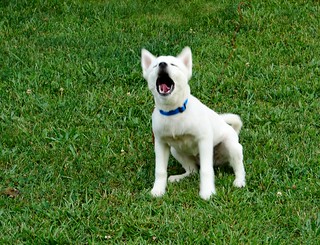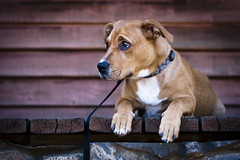Finding the right companion for your home isn’t just about picking up the cutest pooch around or even following your friend’s recommendations. A dog isn’t just a piece of clothing or jewelry you can put away in the closet or a drawer. Dogs are a life-commitment, and thus the decision to own one has to be made with careful thought.
 It is often disheartening to see young pups put back up for adoption when the owners decide they can’t take care of them or when they discover how much work it is owning a dog, but it happens every day.
It is often disheartening to see young pups put back up for adoption when the owners decide they can’t take care of them or when they discover how much work it is owning a dog, but it happens every day.
This is why it’s so important to research and discover what dog breed will best suit you and your lifestyle. There are several areas and characteristics to consider before making the ultimate decision, and it will determine how well you and your pup get along, ensuring that you are happy together.
One size does not fit all
In order for your dog to find their own niche in your home, they have to be comfortable. A small domicile like an upstairs apartment may not be the best home for an outdoor loving breed that likes to run rampant constantly (driving the downstairs neighbors crazy).
For the most part, there has to be enough room for the dog to play when they want to. So if space is restricted, search for a breed that’s going to be tiny enough to think your small apartment will take years to explore.
Of course, one must also consider the noise factor. Not all dogs share their thoughts and feelings at the same volume as others. Size doesn’t really matter in this particular situation, since many terrier breeds are renowned for their ability to vocalize their thoughts on any situation. Thus, make sure your new friend isn’t going to keep you and the neighbors up all night.
Then there is the food factor and your budget. Not everyone has a budget big enough to feed Akitas or a Saint Bernard, so you have to ask yourself, Will they eat a lot? Budgets increases are mostly underestimated in dog ownership, especially when considering medical emergencies, habit changes, relocation scenarios, and any unexpected situations that can and will likely happen at some point in both your lives. This is why it’s important to consider the actual and potential costs of having your four-legged companion.
To be fluffy, or not to be
One thing about dogs is that when they’re all cute and fluffy, they seem so much more adorable, which is why puppies are irresistibly fun to play with. But they will eventually grow out of their puppy coat and put on a different coat that will be prone to shedding.
Shedding will mean that your home is going to be covered in loose fur, occasionally a fur ball or two collecting in the kitchen corner, and if you don’t vacuum regularly because your pup likes to attack that noisy thing, you’ll end up with fur in your food.
Not all pups shed the same though. In fact, there are some that are hypo-allergenic and don’t shed at all. Because time isn’t always on your side, it’s important to consider how much time you can spend on your dog’s hygiene (such as regular brushing to keep the fur from flying), your own allergies, and how much you are willing to invest in keeping a tidy home free of fur.
Training
Some breeds are easily trainable than others, while some breeds seem to be better at certain tasks than others. Then there are those that seem to just have a mind of their own. In most cases, high energy breeds such as Border Collies, Blue Heelers (Australian cattle dog), and Australian Shepherds require far more attention to train properly. If you don’t have the time to spend training them in-depth, high energy breeds are more likely to do what they want.
Personality match
Consider what it is that you want out of the relationship you have with your pup. Do you want them for comfort and occasional hugs? Is it for security and peace of mind? Or maybe you want a pup that will go on outdoor adventures and enjoys camping?
Each dog breed tend to have its defining characteristics. Hounds tend to be more oblivious to others and love to keep their nose to the ground. Cattle dog breeds bond specifically to their adopted family, love the outdoors, and have plenty of energy. Terrier breeds are yappy and independent, love to hang out with their family, but are mischievous at times.
But there is still the individual personality to consider in a friend. Every dog is unique and has their own tale to tell, which defines who they are and how they live their life with you. Take time and make the right decision for you and your new furry friend because it’s one that will affect your happiness together.









